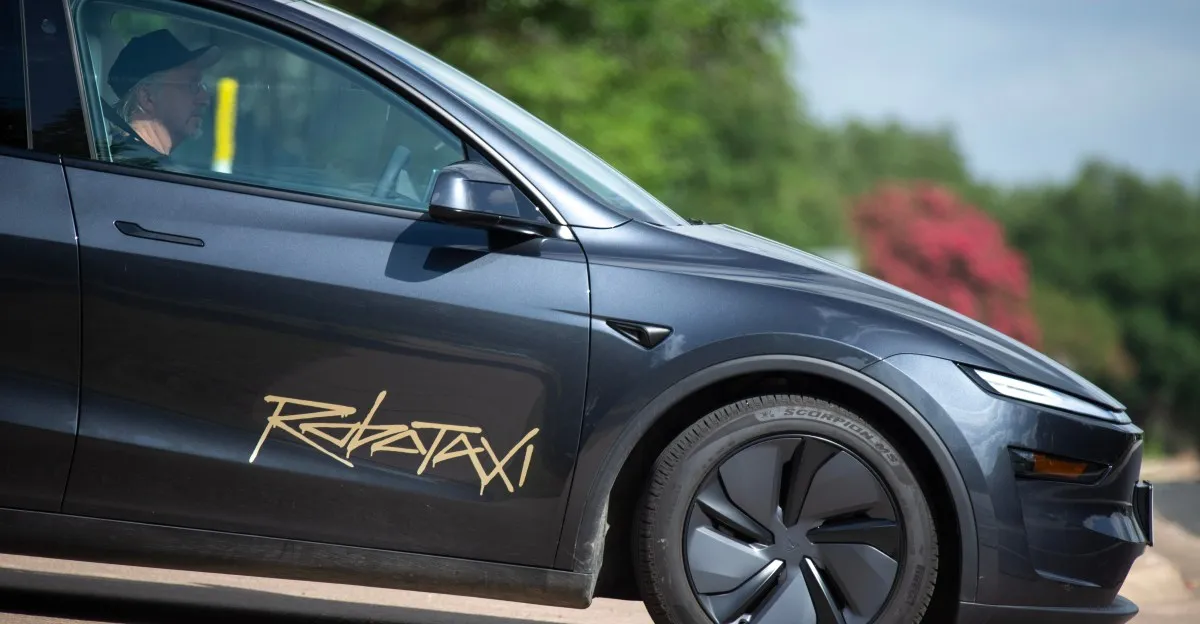
Tesla has officially launched its long-awaited robotaxi service in Austin, Texas, on Sunday, June 22nd. As the excitement builds, we are starting to see the first reactions from early users. However, it's essential to clarify a few important details regarding this initial rollout.
Notably, Tesla's robotaxi service is not yet available to the general public. Contrary to Elon Musk's earlier promises of a fully “unsupervised” operation, the vehicles will have Tesla-employed “safety monitors” seated in the front passenger seat. These monitors are equipped to react to emergencies by activating a kill switch if necessary. This approach sets Tesla apart from other autonomous vehicle operators, who typically only include safety monitors during the testing phase.
The rides are confined to a geofenced area of Austin that has been meticulously mapped by the company. In certain instances, Tesla has even deployed chase cars and remote drivers as additional safety measures, although some vehicles have been seen operating without this backup. At launch, the service is invite-only, with many pro-Tesla influencers receiving invitations, raising questions about the objectivity of their initial reviews.
The limited trial features between 10-20 Model Y vehicles branded as “Robotaxi.” The much-anticipated fully autonomous Cybercab, unveiled last year, is not expected to be available until at least 2026. The current service operates from 6 AM to 12 AM in a relatively safe section of Austin, deliberately avoiding bad weather, highways, airports, and complex intersections. Despite these precautions, the launch seemed to struggle initially, with several invitees reporting that they had not received the robotaxi app by 1 PM ET on launch day.
In the meantime, Musk tweeted that the service would be available later that afternoon, offering initial customers a “flat fee” of $4.20 per ride. This quirky pricing choice has drawn attention due to Musk's history with cannabis culture. As riders awaited access, Tesla unveiled a new robotaxi page on its website, inviting visitors to sign up for updates regarding the service's broader availability.
Upon gaining access to the app, users like Sawyer Merritt shared images of the service area map, which is restricted to a small zone bordered by the Colorado River, Highway 183, Highways 290 and 71, and Zilker Park. The initial rides appeared to be uneventful, with several invitees livestreaming their experiences as they summoned their first vehicles. One tester, known as Bearded Tesla Guy, described the app’s interface as “basically Uber.”
Some users experienced challenges locating their designated pickup spots, likening the process to “Pokemon hunting” but for robotaxis. Upon entering the vehicle, the safety monitor requested riders to show their robotaxi apps to verify their identities. However, the monitors remained quiet throughout the rides, prompting speculation about future identification methods. For example, Waymo requires customers to unlock their vehicles via their ride-hailing app.
The robotaxi's rear screen prompts riders to fasten their seatbelts, and the ride begins once they press an animated “start ride” button. Riders who registered for the app using their existing Tesla profiles can enjoy their preferred music apps on the rear screen. The front display provides a visualization akin to Tesla’s Full Self-Driving feature, although Musk asserts that these robotaxis operate on a special version of FSD not available to typical Tesla drivers.
During rides, the vehicles encountered various everyday scenarios, such as U-turns, speed bumps, and pedestrians, while maintaining speeds of around 40 mph or slower. Feedback from testers frequently described the rides as “smooth,” “great,” and “normal.” One user noted that they were able to induce a minor issue that required assistance from a remote operator, although they refrained from labeling it as a disengagement.
As Tesla embarks on this new journey, the future holds significant challenges. Musk has expressed interest in launching a robotaxi service in California, where the regulatory landscape is far more complicated than in Texas. He has claimed that Tesla could have over a thousand driverless vehicles operational “within a few months.” Meanwhile, Waymo is already ahead in the game, operating more than 1,500 driverless vehicles across cities like San Francisco, Los Angeles, Phoenix, and Austin, with plans for further expansion into Atlanta, Miami, and Washington, DC.
As Tesla continues to refine its robotaxi service, the focus will be on overcoming regulatory hurdles and expanding its fleet to maintain competitiveness in the rapidly evolving autonomous vehicle market.